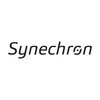Filter interviews by
EPAM Systems Data Engineer Interview Questions and Answers
12 Interview questions
Connecting Spark to Azure SQL Database involves configuring JDBC and using Spark's DataFrame API for data operations.
Use the JDBC driver for Azure SQL Database to establish a connection.
Example connection string: 'jdbc:sqlserver://<server>.database.windows.net:1433;database=<database>;user=<user>@<server>;password=<password>'
Utilize Spark's DataFrame API to read and write data: df.wri...
RDD, DataFrame, and Dataset are core abstractions in Apache Spark for handling distributed data processing.
RDD (Resilient Distributed Dataset) is the fundamental data structure in Spark, representing an immutable distributed collection of objects.
DataFrames are similar to RDDs but are optimized for performance and allow for schema-based operations, making them easier to use.
Datasets combine the benefits of RDDs an...
This code identifies and prints duplicate numbers from a given list using a dictionary to track occurrences.
Use a dictionary to count occurrences of each number.
Iterate through the list and update the count in the dictionary.
Print numbers that have a count greater than 1.
Example: For the list [1, 2, 3, 2, 4, 3], the output should be 2 and 3.
A data engineering project focused on building a scalable ETL pipeline for healthcare data analytics.
Architecture includes data ingestion, processing, and storage layers.
Used Apache Kafka for real-time data streaming from various sources.
Implemented Apache Spark for batch processing and data transformation.
Stored processed data in Amazon Redshift for analytics and reporting.
Utilized Airflow for orchestrating ETL w...
What people are saying about EPAM Systems





This code reverses the order of words in a given sentence, providing a clear output of the reversed sentence.
Split the Sentence: Use a method to split the sentence into an array of words. Example: 'Hello World' becomes ['Hello', 'World'].
Reverse the Array: Utilize an array method to reverse the order of the words. Example: ['Hello', 'World'] becomes ['World', 'Hello'].
Join the Words: Combine the reversed array bac...
Hive supports two types of tables: Managed and External, each with distinct data management and storage characteristics.
Managed Tables: Hive manages both the schema and the data. Dropping the table deletes the data.
External Tables: Hive manages only the schema. Dropping the table does not delete the data, which remains in the external storage.
Use Managed Tables for temporary data that can be recreated easily.
Use E...
I have worked with Azure Data Factory, Azure Databricks, and Azure SQL Database.
Azure Data Factory for data integration and orchestration
Azure Databricks for big data processing and analytics
Azure SQL Database for relational database management
The tech stack used includes Python, SQL, Apache Spark, Hadoop, AWS, and Docker.
Python for data processing and analysis
SQL for database querying
Apache Spark for big data processing
Hadoop for distributed storage and processing
AWS for cloud services
Docker for containerization
Scala has two types of variables - mutable and immutable.
Scala has mutable variables that can be reassigned using the var keyword.
Scala also has immutable variables that cannot be reassigned once they are initialized using the val keyword.
Example: var mutableVariable = 10; val immutableVariable = 20;
Data skewness can be handled in Spark by using techniques like partitioning, bucketing, and broadcasting.
Partitioning the data based on a key column can distribute the data evenly across the cluster.
Bucketing can further divide the data into smaller buckets based on a hash function.
Broadcasting small tables can reduce the amount of data shuffled across the network.
Using dynamic allocation can also help in handling...
EPAM Systems Data Engineer Interview Experiences
10 interviews found
(1 Question)
- Q1. What Azure solutions have you worked with?
- Ans.
I have worked with Azure Data Factory, Azure Databricks, and Azure SQL Database.
Azure Data Factory for data integration and orchestration
Azure Databricks for big data processing and analytics
Azure SQL Database for relational database management
Skills evaluated in this interview
I applied via Approached by Company and was interviewed in Jan 2024. There were 3 interview rounds.
(4 Questions)
- Q1. Pyspark coding questions
- Q2. Data Modelling question
- Q3. Sql coding questions
- Q4. Python coding questions
(1 Question)
- Q1. Based on the previous projects and cloud technologies
(3 Questions)
- Q1. Questions on Bigquery
- Q2. Data ware house Migration questions
- Q3. Airflow scheduling questions
(1 Question)
- Q1. Explained about Company
I appeared for an interview in Oct 2024, where I was asked the following questions.
- Q1. Spark Architecture
- Q2. Python string and list coding
I appeared for an interview in Sep 2024, where I was asked the following questions.
- Q1. Spark architecture, optimisations
- Q2. Spark & Python Coding
(2 Questions)
- Q1. Tell me about yourself
- Q2. What tech stack are used
- Ans.
The tech stack used includes Python, SQL, Apache Spark, Hadoop, AWS, and Docker.
Python for data processing and analysis
SQL for database querying
Apache Spark for big data processing
Hadoop for distributed storage and processing
AWS for cloud services
Docker for containerization
Skills evaluated in this interview
I applied via LinkedIn and was interviewed in Sep 2023. There were 2 interview rounds.
(3 Questions)
- Q1. Talk about your past experiences
- Ans.
I have extensive experience in data engineering, focusing on ETL processes, data warehousing, and big data technologies.
Developed ETL pipelines using Apache Spark to process large datasets for a retail client, improving data accessibility by 30%.
Implemented a data warehouse solution on AWS Redshift, enabling real-time analytics for a healthcare startup.
Collaborated with data scientists to optimize data models, resultin...
- Q2. Types of Variables in Scala
- Ans.
Scala has two types of variables - mutable and immutable.
Scala has mutable variables that can be reassigned using the var keyword.
Scala also has immutable variables that cannot be reassigned once they are initialized using the val keyword.
Example: var mutableVariable = 10; val immutableVariable = 20;
- Q3. Explained in Detail about next Steps. Total 5 Rounds Including HR and HackerRank Test Round 1: HR Round 2: hackerrank assessment - If we clear this we move to Next Round Round 3: Technical Interview - Incl...
Hacker Rank Assessment - take home
I applied via LinkedIn and was interviewed in Mar 2023. There was 0 interview round.
- Q1. This round was scheduled for 1.5 hours and lasted 1 hrs 5 minutes. Discuss about projects done for previous company and architecture of the same.
- Q2. Write code for printing duplicate numbers in a list.
- Ans.
This code identifies and prints duplicate numbers from a given list using a dictionary to track occurrences.
Use a dictionary to count occurrences of each number.
Iterate through the list and update the count in the dictionary.
Print numbers that have a count greater than 1.
Example: For the list [1, 2, 3, 2, 4, 3], the output should be 2 and 3.
- Q3. Scala traits, higher order functions, currying
- Q4. Connecting Spark to Azure SQL Database.
- Ans.
Connecting Spark to Azure SQL Database involves configuring JDBC and using Spark's DataFrame API for data operations.
Use the JDBC driver for Azure SQL Database to establish a connection.
Example connection string: 'jdbc:sqlserver://<server>.database.windows.net:1433;database=<database>;user=<user>@<server>;password=<password>'
Utilize Spark's DataFrame API to read and write data: df.write.jd...
- Q5. Elaboration of Spark optimization techniques. Types of transformations, shuffling.
- Ans.
Spark optimization techniques enhance performance through efficient data processing and resource management.
Use DataFrames and Datasets for optimized execution plans.
Leverage lazy evaluation to minimize unnecessary computations.
Apply partitioning to distribute data evenly across nodes, e.g., using 'repartition' or 'coalesce'.
Minimize shuffling by using narrow transformations like 'map' and 'filter' instead of wide tran...
- Q6. Difference between cache and persist, repartition and coalesce.
- Ans.
Cache stores data in memory for quick access, while persist saves it to disk. Repartition changes data distribution; coalesce reduces partitions.
Cache: Stores DataFrame in memory for faster access during subsequent operations.
Persist: Saves DataFrame to disk, allowing for fault tolerance but slower than cache.
Repartition: Increases or decreases the number of partitions, potentially shuffling data across nodes.
Coalesce:...
- Q7. Spark components and job execution steps.
- Q8. Hive types of tables and difference between them
- Ans.
Hive supports two types of tables: Managed and External, each with distinct data management and storage characteristics.
Managed Tables: Hive manages both the schema and the data. Dropping the table deletes the data.
External Tables: Hive manages only the schema. Dropping the table does not delete the data, which remains in the external storage.
Use Managed Tables for temporary data that can be recreated easily.
Use Extern...
- Q9. This was the final round of 1 hour and lasted 45 minutes.I was asked technical questions along with last companies project description.
- Q10. Discuss project and it's architecture.
- Q11. Write code to print reverse of a sentence word by word.
- Ans.
This code reverses the order of words in a given sentence, providing a clear output of the reversed sentence.
Split the Sentence: Use a method to split the sentence into an array of words. Example: 'Hello World' becomes ['Hello', 'World'].
Reverse the Array: Utilize an array method to reverse the order of the words. Example: ['Hello', 'World'] becomes ['World', 'Hello'].
Join the Words: Combine the reversed array back int...
- Q12. Difference between RDD, Dataframe, Dataset.
- Ans.
RDD, DataFrame, and Dataset are core abstractions in Apache Spark for handling distributed data processing.
RDD (Resilient Distributed Dataset) is the fundamental data structure in Spark, representing an immutable distributed collection of objects.
DataFrames are similar to RDDs but are optimized for performance and allow for schema-based operations, making them easier to use.
Datasets combine the benefits of RDDs and Dat...
- Q13. Lineage graph, DAG formation, RDDs characteristics
- Q14. Two coding questions on codility. One was easy and second medium. 10 MCQ questions on Big Data related technologies.
Interview Preparation Tips
- Spark
- Hive
- Hadoop
I applied via Job Fair and was interviewed before Feb 2023. There was 1 interview round.
(1 Question)
- Q1. Asked basic big data related questions. Hadoop, spark arch. Spark optimization, serialization. Hadoop datanode, namenode. SQL queries medium level.
(1 Question)
- Q1. How will you handle data skewness in spark
- Ans.
Data skewness can be handled in Spark by using techniques like partitioning, bucketing, and broadcasting.
Partitioning the data based on a key column can distribute the data evenly across the cluster.
Bucketing can further divide the data into smaller buckets based on a hash function.
Broadcasting small tables can reduce the amount of data shuffled across the network.
Using dynamic allocation can also help in handling data...
Interview Preparation Tips
Skills evaluated in this interview
EPAM Systems Interview FAQs
Tell us how to improve this page.
EPAM Systems Interviews By Designations
- EPAM Systems Senior Software Engineer Interview Questions
- EPAM Systems Software Engineer Interview Questions
- EPAM Systems Software Developer Interview Questions
- EPAM Systems Automation Test Engineer Interview Questions
- EPAM Systems Java Developer Interview Questions
- EPAM Systems Lead Software Engineer Interview Questions
- EPAM Systems Senior Data Engineer Interview Questions
- EPAM Systems Senior Business Analyst Interview Questions
- Show more
Interview Questions for Popular Designations
- Software Engineer Interview Questions
- Senior Engineer Interview Questions
- System Engineer Interview Questions
- Data Analyst Interview Questions
- Senior Data Engineer Interview Questions
- Developer Interview Questions
- Azure Data Engineer Interview Questions
- Big Data Engineer Interview Questions
- Show more
Overall Interview Experience Rating
based on 8 interview experiences
Difficulty level
Duration
Data Engineer Interview Questions from Similar Companies
EPAM Systems Data Engineer Reviews and Ratings
based on 11 reviews
Rating in categories
|
Senior Software Engineer
3.7k
salaries
| ₹16.3 L/yr - ₹37.3 L/yr |
|
Software Engineer
2.2k
salaries
| ₹8.5 L/yr - ₹23.8 L/yr |
|
Lead Software Engineer
1.1k
salaries
| ₹30 L/yr - ₹47.1 L/yr |
|
Senior Systems Engineer
391
salaries
| ₹22 L/yr - ₹36.3 L/yr |
|
Software Developer
366
salaries
| ₹10.2 L/yr - ₹30.5 L/yr |

DXC Technology

Sutherland Global Services

Optum Global Solutions

Virtusa Consulting Services
- Home >
- Interviews >
- EPAM Systems Interview Questions
















